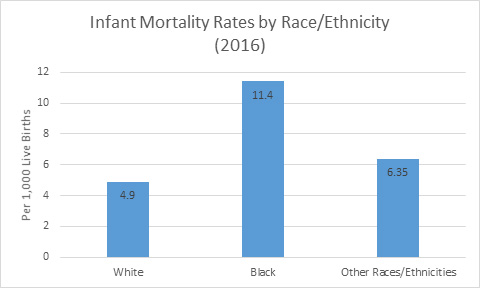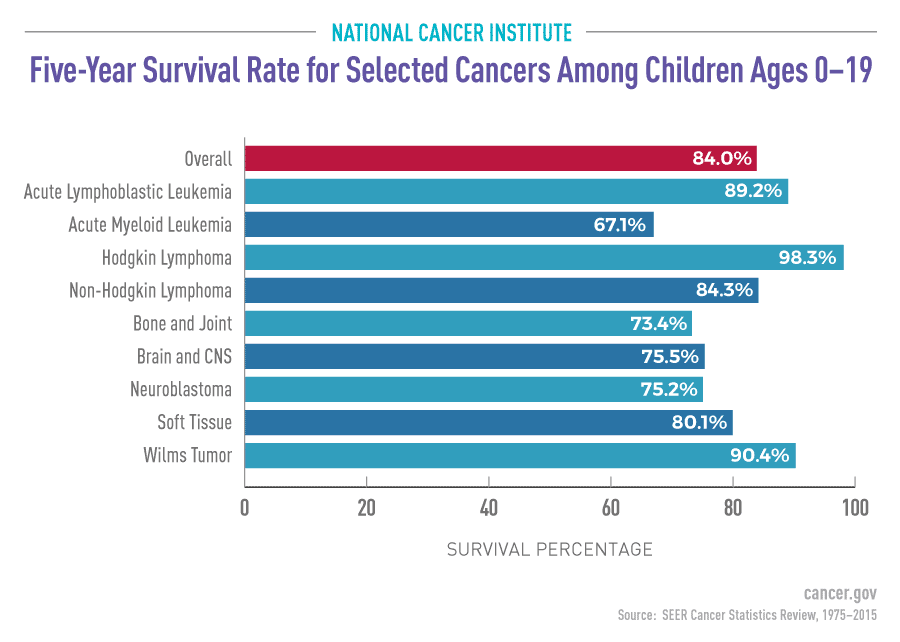
Mortality rates in Black infants have become a critical public health concern, revealing alarming disparities that persist in contemporary America. Despite significant advancements in healthcare and a general increase in life expectancy for both Black and white populations, the rates of infant mortality starkly highlight a deep-rooted issue of healthcare inequality. Research indicates that Black infants are twice as likely to die compared to their white counterparts, a statistic that underscores the urgent need for targeted public health policies. The alarming reality is that while overall mortality rates have narrowed between racial groups, the gap in infant mortality is not only widening but demands immediate attention. Addressing this Black and white mortality disparity is imperative to ensure equitable healthcare access and improve life outcomes for all infants.
The issue of infant death rates among African American babies reflects a broader context of racial health disparities that has long afflicted the United States. When we examine the alarming statistics associated with infant fatalities in Black communities, it becomes evident that the healthcare system is failing these families. This widening gap in survival rates between Black and white infants showcases the critical challenges of health outcomes in racially marginalized groups. As public health experts delve deeper into the underlying reasons, the urgency to reform healthcare practices and policies grows exponentially. Tackling these disparities is not just a matter of policy revision; it signals a call to action for a society increasingly aware of healthcare inequality.
The Stark Reality of Infant Mortality Rates in Black Babies
Despite significant advancements in healthcare and a general improvement in life expectancy among Americans, the plight of Black infants presents a disheartening reality. Recent studies reveal that Black infants face a mortality rate that is significantly higher than their white counterparts, nearly double. This troubling statistic has persisted and even worsened over decades, reflecting a deep-rooted systemic issue within healthcare. While the overall mortality rates for both Black and white infants have seen some declines, the racial disparity has reached alarming proportions, illustrating the ongoing struggles specific to Black babies.
The leading causes of this excess mortality are often linked to medical conditions during pregnancy, exacerbated by socio-economic factors such as healthcare access and quality. With the sheer scale of these disparities, it becomes paramount for public health officials to urgently address the glaring inequalities. Solutions must go beyond mere acknowledgment; they need to translate into actionable public health policies that specifically target the root causes of these disparities, ensuring equitable healthcare for infants across racial lines.
Healthcare Inequality: Examining the Racial Disparities
Healthcare inequality remains one of the defining challenges in the U.S., influencing outcomes like infant mortality rates. The disparities in healthcare access and quality between Black and white Americans have created a two-tiered system where the life chances of Black infants are significantly compromised. Structural factors, such as socio-economic status, access to prenatal care, and educational resources, play a critical role in shaping health outcomes. Without a comprehensive approach to dismantling these systemic barriers, healthcare inequality will persist, and disparities will continue to widen.
Moreover, public health policies need to prioritize targeted interventions that address these disparities directly. Policymakers must focus on improving access to quality healthcare, enhancing maternal health services, and providing educational support for expecting mothers. Only with concerted efforts can we hope to bridge the gap in infant mortality rates, ensuring that Black infants, like their white peers, receive the best start in life.
Public Health Policies Addressing Racial Disparities
To effectively close the healthcare gap, public health policies must take center stage in the dialogue surrounding racial disparities in infant mortality rates. Historically, public policy decisions have often overlooked the nuances of healthcare access among different racial groups, leading to a perpetuation of inequality. The alarming statistics surrounding Black infant mortality rates indicate a pressing need for systemic change that prioritizes equity in health services, education, and community support.
Innovations in public health policy should include comprehensive healthcare coverage for all families, particularly for those in underserved communities. Education campaigns raising awareness about maternal and child health can empower Black families to seek timely and adequate care. Additionally, collaboration between healthcare providers, policymakers, and community organizations is essential in cultivating an environment that supports the health of all infants, irrespective of race.
The Intersection of Life Expectancy and Infant Mortality
While it is noteworthy that life expectancy in America has improved for both Black and white populations over the last 70 years, the reality of infant mortality rates tells a different story. This juxtaposition highlights the complexity of health outcomes and the need for a more nuanced understanding of what contributes to these disparities. While adults may benefit from advances in healthcare, the same cannot be said for infants, particularly those in marginalized communities who continue to experience higher mortality rates.
Understanding life expectancy alone does not provide a holistic view of public health. It is essential to dissect the factors driving the gap between adult health improvements and the worsening conditions for infants. Addressing these issues will require a mindset shift among public health officials, focusing not only on boosting life expectancy but ensuring equity in healthcare so that the next generation can thrive.
The Importance of Continued Research on Mortality Disparities
Ongoing research is vital for uncovering the underlying causes of mortality disparities among racial groups, especially concerning infant mortality rates. Many studies have looked at shorter time intervals, failing to capture the broader trends over the decades. By analyzing long-term data, researchers can provide a more comprehensive overview of healthcare trajectories and highlight persistent issues that require urgent attention.
Future studies should encompass a wide range of factors influencing infant mortality, including social determinants of health, access to prenatal care, and the impact of systemic racism within the healthcare system. Additionally, findings must be effectively communicated to stakeholders, including policymakers and community health organizations, who can then implement strategies aimed at reducing these stark disparities.
Harnessing Community Support to Combat Healthcare Inequality
Community strategies play a crucial role in addressing healthcare disparities, particularly in the context of high infant mortality rates among Black populations. Grassroots organizations and public health initiatives that work directly with communities can provide targeted support tailored to specific needs. Programs focusing on maternal health education, improving access to clinics, and supporting Black mothers can create a tangible difference in infant outcomes.
Moreover, building trust within communities is essential for encouraging families to engage with healthcare services. Culturally competent care that respects and understands the unique challenges faced by Black families can lead to improved health literacy and outcomes. Investing in community-centric solutions is a necessary step toward bridging the gaps in healthcare inequality, emphasizing the need for collaborative efforts to ensure the health and wellbeing of all infants.
Socioeconomic Factors Influencing Infant Mortalities
Socioeconomic status is a significant determinant of infant mortality rates, particularly evident in the disparities between Black and white infants. Research consistently shows that families facing economic hardship are at a higher risk of poor health outcomes, impacting both maternal and child health. Access to resources such as nutritious food, transportation to healthcare facilities, and healthy living environments can directly influence infant health and survival.
Addressing these socioeconomic barriers requires a multi-faceted approach from policymakers aimed at uplifting communities through financial support, employment opportunities, and educational programs. By investing in the social determinants of health, society can create a foundation where every child, regardless of race or background, has an equal chance of survival and thriving.
The Role of Education in Improving Health Outcomes
Education serves as a powerful catalyst for improving health outcomes, particularly regarding infant mortality rates. Knowledge about maternal health, infant care, and available healthcare resources can significantly influence the decisions families make, ultimately impacting infant survival. Increasing health literacy among Black communities can empower parents to seek timely medical attention and understand the importance of prenatal care.
Community education programs that focus on the unique challenges facing Black mothers can be instrumental in reducing mortality rates. By providing tailored support and information, these initiatives can help bridge the gap in health outcomes and promote healthier communities. Educating families not only fosters a more informed society but also encourages future generations to prioritize health and wellbeing.
Advocating for Equity in Healthcare Policy
Advocating for equity in healthcare policy is essential to combat the alarming issues surrounding infant mortality rates among Black infants. As the research indicates, the systemic inequalities within the healthcare system must be acknowledged and addressed by policymakers. Activists and community leaders play a crucial role in bringing these disparities to the forefront, ensuring that the needs of marginalized populations are recognized and prioritized.
Policies designed to eradicate healthcare inequalities should focus on improving access, equity, and quality of care. This includes increasing funding for maternal and child health programs, implementing nationwide training for healthcare providers on cultural competency, and ensuring that healthcare systems are accountable for disparities in outcomes. By advocating for policies that address these issues, public health officials can foster a more just healthcare landscape that benefits all infants.
Frequently Asked Questions
What are the current infant mortality rates among Black infants compared to white infants in the U.S.?
As of recent studies, Black infants in the U.S. face a mortality rate that is twice as high as that of white infants. Specifically, the mortality rate for Black infants is 115 percent higher than for white infants, indicating a significant racial disparity in infant health outcomes.
How have mortality rates in Black infants changed since the 1950s?
Since the 1950s, the mortality rates in Black infants have worsened considerably, increasing from a 92 percent higher rate compared to white infants, to a current rate that is 115 percent higher. This reflects ongoing healthcare inequality and emphasizes the need for targeted public health interventions.
What factors contribute to the high infant mortality rates among Black infants?
High infant mortality rates among Black infants are attributed to various factors, primarily including healthcare inequality, access to quality medical care, and medical conditions during pregnancy. These multidimensional disparities highlight the urgent need for comprehensive public health policy reforms.
How do Black and white mortality disparities among infants reflect broader public health issues?
The increasing disparity in infant mortality rates between Black and white populations illustrates broader systemic healthcare issues, including lack of access to quality care and the socio-economic factors impacting health outcomes. Despite overall improvements in life expectancy, these discrepancies underscore the pressing need for equitable healthcare policies.
What implications do the findings about Black infant mortality rates have for public health policy?
The alarming findings regarding Black infant mortality rates call for immediate action from public health officials and policymakers. It emphasizes the necessity of focusing on addressing healthcare inequalities and prioritizing interventions that can equalize health outcomes across different racial groups.
What should the public know about the findings on Black infant mortality rates and their relevance to healthcare inequality?
It is essential for the public to understand that while overall mortality rates have improved in the U.S., significant disparities remain, particularly for Black infants. This highlights systemic issues of healthcare inequality that demand attention, underlining the importance of advocacy for equitable health policies.
What actions can be taken to address the widening gap in infant mortality rates between Black and white infants?
To address the increasing gap in infant mortality rates, comprehensive strategies including improving access to quality healthcare for Black families, addressing socio-economic factors, and implementing targeted public health programs are crucial. Collaborative efforts between healthcare providers and policymakers are required to foster significant change.
Why do studies on mortality rates in Black infants matter for future generations?
Studying mortality rates in Black infants is critical as it sheds light on systemic healthcare inequalities that affect the health of future generations. By understanding and addressing these disparities, we can work towards a healthier society with equal opportunities for all infants, regardless of their racial background.
| Key Findings | Data Source | Mortality Rate Comparison | Implications |
|---|---|---|---|
| Mortality rates for Black infants are 115% higher than for white infants, an increase from 92% in the 1950s. | Study analyzed data from the U.S. between 1950 and 2019, emphasizing the disparity in infant mortality rates. | Black infants die at twice the rate of white infants, indicating worsening disparities in infant mortality. | Findings suggest the need for targeted public policy interventions to reduce healthcare inequality affecting Black infants. |
| Life expectancy has increased for both racial groups, but the gap persists for infant mortality. | Research conducted by a team led by Associate Professor Soroush Saghafian at Harvard University. | Black adults have an 18% higher mortality rate overall compared to white adults, indicating systemic health issues. | The study highlights the critical public health issue, urging policymakers to prioritize this growing health crisis. |
Summary
Mortality rates in Black infants have become a significant health concern, as recent studies reveal that these rates are not only disproportionately higher than those of white infants but have also worsened over the past several decades. While overall life expectancy has improved for both Black and white Americans, the persistent and increasing gap in infant mortality highlights systemic health disparities that require urgent attention. The findings underscore the necessity for public health officials and policymakers to focus on addressing these inequalities with effective strategies aimed at improving maternal and infant health outcomes in the Black community.





